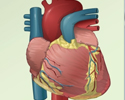Pleural fluid culture
Pleural fluid culture is a test that examines a sample of fluid that has been collected in the pleural space to see if you have an infection to help understand the cause of the buildup of fluid in this space. The pleural space is the area between the lining of the outside of the lungs (pleura) and the wall of the chest. When fluid collects in the pleural space, the condition is called pleural effusion.
Pleural effusion
A pleural effusion is a buildup of fluid between the layers of tissue that line the lungs and chest cavity.

How the Test is Performed
A procedure called thoracentesis is performed to get a sample of pleural fluid. The sample is sent to a laboratory and examined under a microscope for signs of infection. The sample is also placed in a special dish (culture) to support the growth of microorganisms. It is then watched to see if bacteria or any other germs grow. This can take several days.
Thoracentesis
Thoracentesis is a procedure to remove fluid from the space between the lining of the outside of the lungs (pleura) and the wall of the chest....
Read Article Now Book Mark ArticleHow to Prepare for the Test
No special preparation is needed before the test. A chest x-ray will be performed before and after the thoracentesis procedure.
Do not cough, breathe deeply, or move during the procedure to avoid injuring the lung.
How the Test will Feel
For thoracentesis, you sit on the edge of a chair or bed with your head and arms resting on a table. Your health care provider cleans the skin around the insertion site. Numbing medicine (anesthetic) is injected into the skin.
A needle is placed through the skin and muscles of the chest wall into the pleural space. As fluid drains into a collection bottle, you may cough a bit. This is because your lung re-expands to fill the space where fluid had been. This sensation lasts for a few hours after the test.
During the test, tell your provider if you have sharp chest pain or shortness of breath.
Why the Test is Performed
Your provider may order this test if you have signs of a certain infection or if a chest x-ray or CT scan of the chest shows you have too much fluid in the space around the lungs.
Chest x-ray
A chest x-ray is an x-ray of the chest, lungs, heart, large arteries, ribs, and diaphragm.

CT scan of the chest
A chest CT (computed tomography) scan is an imaging method that uses x-rays to create cross-sectional pictures of the chest and upper abdomen....

Normal Results
A normal result means no bacteria or fungi were seen in the test sample.
A normal value is no growth of any bacteria. Talk to your provider about the meaning of your specific test results.
What Abnormal Results Mean
Abnormal results may indicate:
-
Empyema (collection of pus in the pleural space)
Empyema
Empyema is a collection of pus in the space between the lung and the inner surface of the chest wall (pleural space).
 ImageRead Article Now Book Mark Article
ImageRead Article Now Book Mark Article - Lung abscess (collection of pus in a lung)
-
Pneumonia
Pneumonia
Pneumonia is a breathing (respiratory) condition in which there is an infection of the lung. This article covers community-acquired pneumonia (CAP). ...
 ImageRead Article Now Book Mark Article
ImageRead Article Now Book Mark Article -
Tuberculosis
Tuberculosis
Pulmonary tuberculosis (TB) is a contagious bacterial infection that involves the lungs. It may spread to other organs.
 ImageRead Article Now Book Mark Article
ImageRead Article Now Book Mark Article
Risks
Risks of thoracentesis are:
- Collapsed lung (pneumothorax)
Pneumothorax
A collapsed lung occurs when air escapes from the lung. The air then fills the space outside of the lung between the lung and chest wall. This buil...
 ImageRead Article Now Book Mark Article
ImageRead Article Now Book Mark Article - Excessive loss of blood
- Fluid reaccumulation
- Infection
-
Pulmonary edema
Pulmonary edema
Pulmonary edema is an abnormal buildup of fluid in the lungs. This buildup of fluid leads to shortness of breath.
 ImageRead Article Now Book Mark Article
ImageRead Article Now Book Mark Article -
Respiratory distress
Respiratory distress
Acute respiratory distress syndrome (ARDS) is a life-threatening lung condition that prevents enough oxygen from getting to the lungs and into the bl...
 ImageRead Article Now Book Mark Article
ImageRead Article Now Book Mark Article - Serious complications are uncommon
Reviewed By
Jatin M. Vyas, MD, PhD, Associate Professor in Medicine, Harvard Medical School; Associate in Medicine, Division of Infectious Disease, Department of Medicine, Massachusetts General Hospital, Boston, MA. Also reviewed by David C. Dugdale, MD, Medical Director, Brenda Conaway, Editorial Director, and the A.D.A.M. Editorial team.
Blok BK. Thoracentesis. In: Roberts JR, Custalow CB, Thomsen TW, eds. Roberts and Hedges' Clinical Procedures in Emergency Medicine and Acute Care. 7th ed. Philadelphia, PA: Elsevier; 2019:chap 9.
Parta M. Pleural effusion and empyema. In: Bennett JE, Dolin R, Blaser MJ, eds. Mandell, Douglas, and Bennett's Principles and Practice of Infectious Diseases. 9th ed. Philadelphia, PA: Elsevier; 2020:chap 68.
Disclaimer


 All rights reserved.
All rights reserved.